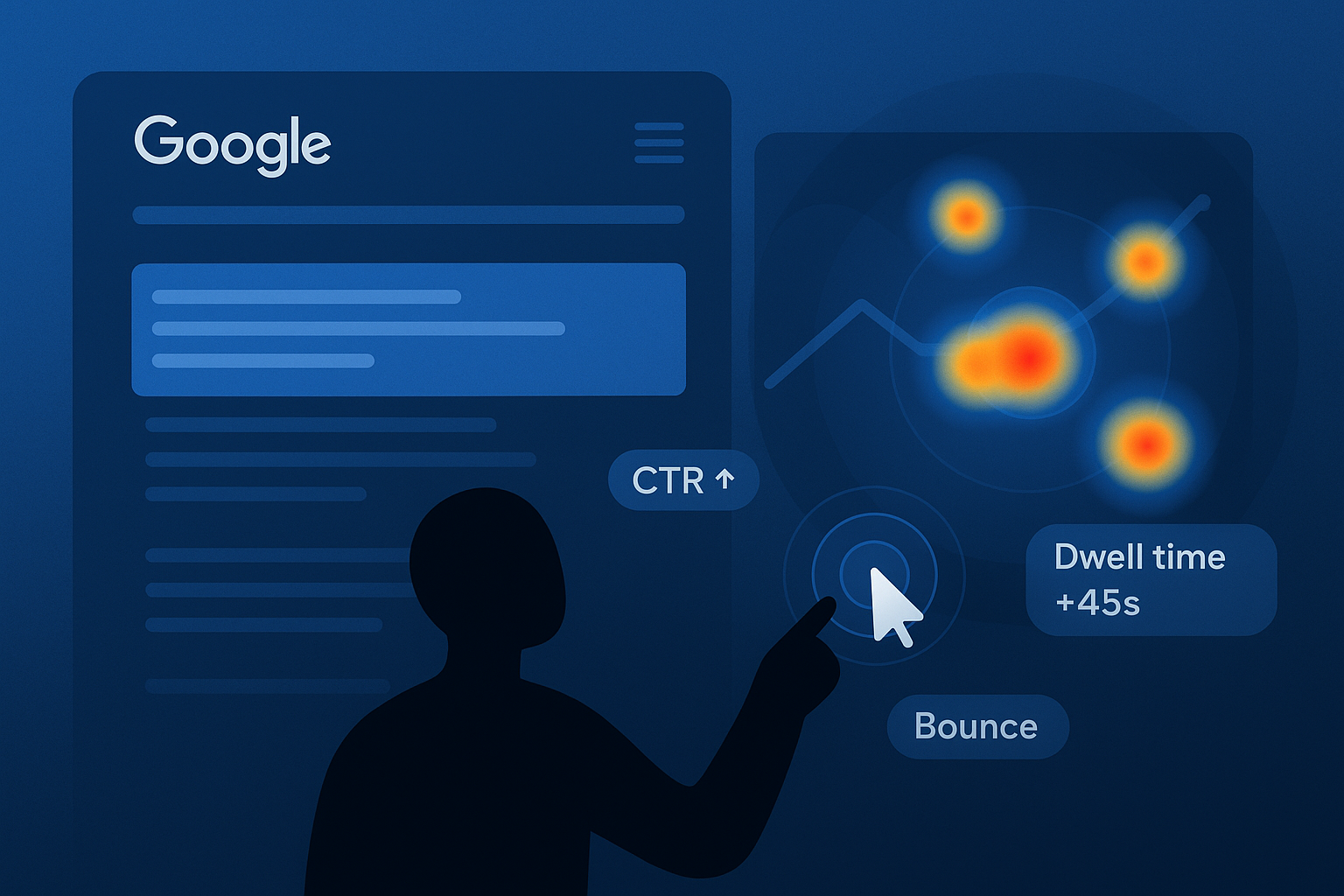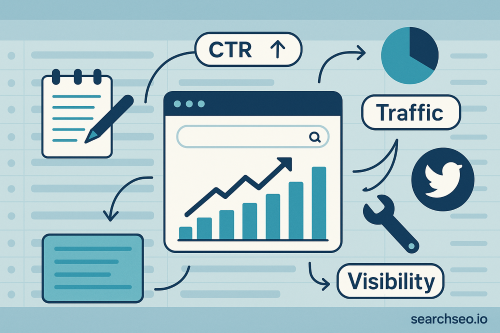If you have been in SEO long enough, you know that ranking is not just about backlinks and keywords anymore. Search engines are watching how real people interact with your site, and rewarding or punishing you based on it. This is where behavioral SEO comes in.

Why behavioral SEO matters more than ever
So, what is behavioral SEO? Simply put, it is how user actions affect your SEO performance. Every click, scroll, and exit is a signal. Search engines are tracking metrics like:
- Click-through rate (CTR): Do people actually click your result?
- Dwell time: Do they stick around after landing?
- Bounce rate and pogo-sticking: Do they jump back to Google quickly?
Google’s RankBrain and now Search Generative Experience (SGE) rely heavily on these user behavior signals. If your page satisfies intent, visitors stay longer and Google takes note.
Key behavioral SEO signals that influence rankings
Click-through rate (CTR)
A high CTR tells Google your page is the “right” answer. Great title tags and meta descriptions can make your link irresistible. Think of CTR as the handshake that gets you into the conversation.
Dwell time
When users spend more time on your page, it signals your content is valuable. Long dwell times show authority and relevance in Google’s eyes.
Bounce rate and pogo-sticking
Not all bounces are bad. If someone finds the answer they need quickly, that is fine. But pogo-sticking, where they return to the SERP and click another result, signals dissatisfaction. Too much of it, and your rankings may dip.
How search engines use behavioral data
- Google: RankBrain and SGE incorporate behavioral signals to refine results.
- Bing: CTR is even more heavily weighted here. Bing rankings can move fast with behavioral boosts.
- Myth-busting: Behavioral SEO alone will not skyrocket you to number one. It is one ranking factor among many. But ignoring it is a mistake.
How to improve behavioral SEO on your website
Nail the intent behind the keyword
Match what the searcher actually wants. Are they just looking for info or ready to buy? Misaligned search intent kills behavioral metrics.
Improve content readability and structure
- Short paragraphs
- Strong subheadings
- Visuals and lists
Make scanning effortless.
Enhance user experience (UX)
- Fast load times
- Clean, mobile-friendly design
- Smart internal linking for deeper engagement
Behavioral SEO meets CTR manipulation: The SearchSEO approach
Here is where things get interesting. Tools like SearchSEO.io can simulate natural user behavior, clicks, dwell time, and engagement, to strengthen your behavioral signals.
Unlike shady bots, SearchSEO uses real browsers and residential IPs to deliver targeted traffic and mimic organic behavior safely. You can fine-tune dwell time, bounce rate, and traffic source so it looks natural.
In other words, it is ethical and strategic behavioral SEO growth.
Behavioral SEO is only part of the picture
Do not mistake this for a silver bullet. A holistic SEO strategy also requires:
- Strong content targeting user intent
- Quality backlinks for authority
- Technical SEO for site health
Behavioral SEO is your edge, not your entire playbook.
Think like a user, rank like a pro
Search engines do not rank keywords. They rank experiences. If users click, stay, and engage, your SEO wins. Keep testing, keep refining, and remember, behavioral signals are user signals. Prioritize real value.


.svg)

.svg)
%201.png)








.svg)